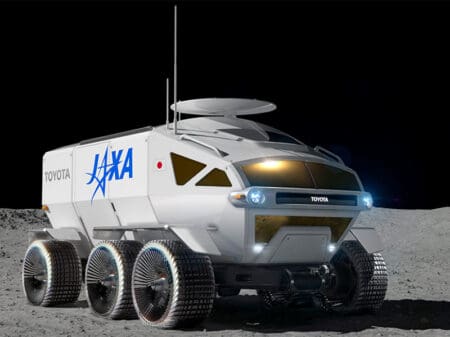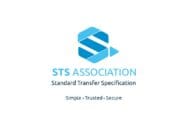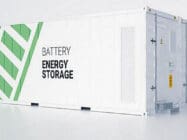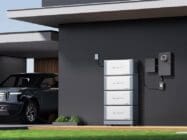
Acoustic spalling a possible key to cheaper solar PV, quantum computing to advance fuel cells for e-mobility and Toyota’s regenerative fuel cell technology for exploration on the Moon are on the week’s technology radar.
Acoustic spalling – key to cheaper solar PV?
III-V solar cells grown out of periodic table groups III and V alloys such as gallium arsenide (GaAs) are the most efficient but also costly, which has limited their use to applications such as powering satellites in space.
But that may be about to change, according to US DOE National Renewable Energy Laboratory (NREL) researchers, who say that the application of sound waves in a new process called ‘acoustic spalling’ holds the potential for significantly reducing their manufacturing costs.
The key is the ability to repeatedly reuse the substrate upon which the cells are grown. Whereas existing technology uses a sacrificial etch layer, which allows a cell to be lifted off a GaAs substrate so that the substrate can be used again, the process is time consuming and leaves behind a residue that requires an expensive polishing step.
Have you read?
US NREL investigates quantum computing in grid operations
Watch this space: solar power boldly goes into new niche
In contrast, spalling, which uses sound waves to control the fracture, takes seconds, with the fracture within the substrate nearly parallel to its surface and allowing the cell to be easily removed, revealing a new, contaminant-free surface from within the substrate that does not require polishing.
“This is super promising for the substrate reuse,” said Kevin Schulte, a scientist in NREL’s High-Efficiency Crystalline PV group and lead author of the study.
“This alone will not make III-V solar cells cost-effective, but as part of this portfolio of research, we’re trying address cost from multiple different angles.”
The researchers were able to make a cell on a previously spalled substrate with an NREL-certified efficiency of 26.9% – similar to that from a new substrate.
However, additional research is needed to determine how many times the substrate can be reused after being subjected to acoustic spalling.
Quantum computing to advance fuel cells for e-mobility
Fuel cells are an emerging option for future mobility, with their competitiveness dependent on improving performance and reducing costs.
This in turn depends on a deeper understanding of the chemical processes involved but modelling is complex and challenging. Moreover, with the quantum properties of the chemical mechanisms involved, they are a good candidate for quantum computers – which is why the BMW Group and Airbus have teamed up with quantum technology company Quantinuum.
The three companies have now developed a hybrid quantum-classical workflow to speed up such research using quantum computers and have reported successfully modelling the oxygen reduction reaction, which converts hydrogen and oxygen into water and electricity in a fuel cell. It is relatively slow and requires a large amount of platinum catalyst, so there is great interest and value in better understanding the underlying mechanisms involved in the reaction.
Dr Peter Lehnert, vice-president, Research Technologies at BMW Group, says that circularity and sustainable mobility are putting us on the quest for new materials to create more efficient products and shape the future user experience.
“Being able to simulate material properties to relevant chemical accuracy with the benefits from the accelerating quantum computing hardware is giving us just the right tools for more speed in innovation for this decisive domain.”
The companies intend to investigate various industrial challenges and believe the approach could have wide ranging benefits, such as for metal-air batteries among others.
Toyota adapts fuel cell vehicle tech for the Moon
Toyota is working on a project to provide its regenerative fuel cell technology, evolved from that developed for its road vehicles, to power a pressurised lunar rover, nicknamed the ‘Lunar cruiser’.
A regenerative fuel cell is a system that provides both power and storage. During the day, powered by solar PV, the system would produce hydrogen and oxygen and then at night, this would be converted to provide power and water.
The system is considered ideal for lunar applications, drawing on local water ice resources but also enabling operations to continue during the long, 14-day lunar night.
Toyota is partnering on the initiative with Mitsubishi, which is working on the Lupex (lunar polar exploration) concept for an earlier phase rover to investigate inter alia the availability of usable water resources on the Moon.
Both initiatives are being undertaken for the Japan Aerospace Exploration Agency (JAXA), which is contributing to NASA’s Artemis mission and is expected to supply the Lunar Cruiser for a 2029 launch date.
The Lunar Cruiser is being developed to normally carry a crew of two – four in a contingency or unmanned – and to have a life span of 10 years and a travel distance of 10,000km, with an off-road driving performance aimed to meet the varied environments on the Moon, including regolith and rocks and craters with their varying slopes.








